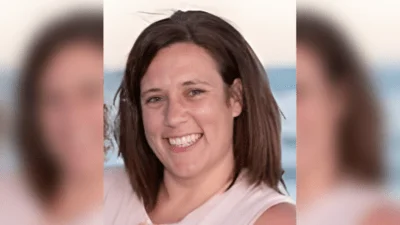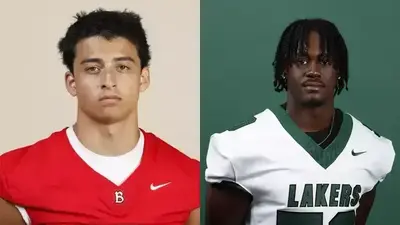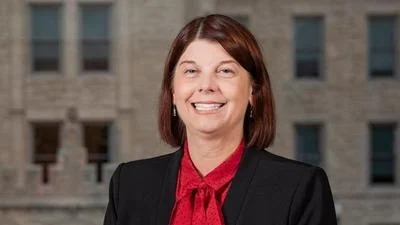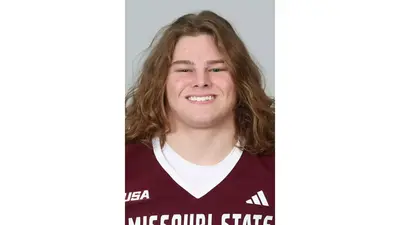DeKalb County Committee of the Whole met Nov. 10.
Here are the minutes provided by the committee:
The Committee of the Whole of the DeKalb County Board met in the Legislative Center’s Gathertorium. Chairman John Frieders called the meeting to order at 7:00 p.m. Those Members present were Mr. Tim Bagby, Mr. Scott Campbell, Ms. Mary Cozad, Ms. Rukisha Crawford, Mrs. Karen Cribben, Mr. Bill Cummings, Mrs. Laurie Emmer, Mr. Steve Faivre, Mr. Tim Hughes, Mrs. Kathy Lampkins, Ms. Dianne Leifheit, Mr. Jim Luebke, Ms. Terri Mann-Lamb, Mr. Roy Plote, Mr. Craig Roman, Ms. Linda Slabon, Mr. Ellingsworth Webb, Vice-Chair Suzanne Willis, and Chairman John Frieders. Those absent were Mr. Patrick Deutsch, Ms. Kiara Jones, Ms. Maureen Little, Mr. Jerry Osland, and Mr. Larry West. A quorum was established with nineteen Members present and five absent.
Others present included Brian Gregory, Derek Hiland, David Berault, Jim Hutcheson, Brad Belanger, Mark Pietrowski, Jr., Larry Forsberg, John Lyon, Jonathan Lageman, Linda Timm, Tim Hakes, Andrew Timm, and additional members of the public.
APPROVAL OF THE AGENDA
Mr. Faivre moved to approve the agenda as presented. Mr. Webb seconded the motion and it was carried unanimously by voice vote.
APPROVAL OF THE MINUTES
It was moved by Mr. Luebke, seconded by Mrs. Emmer and it was moved unanimously to approve the minutes from the October 13, 2021 meeting.
PUBLIC COMMENTS
Mr. Brad Belanger, South Grove Township, addressed the Committee of the Whole on four concerns in the hopes that they would begin the process of addressing said concerns. A majority of the issues surrounded the Industrial Solar Ordinance. Please see Exhibit A for detailed comments.
Mr. Mark Pietrowski, Jr., Mayor of the Town of Cortland, thanked the Board and the County for their efforts and their commitment to the County Board’s Fair Map Redistricting process.
Mr. Larry Forsberg, South Grove Township, spoke on the proposed Owens Creek Industrial Solar Project along with recommending that the setback from the residential community of Clare be at least 2,500 ft or a ½ miles from the hamlet limits. Please see Exhibit B for detailed comments.
Mr. John Lyon, Mayfield Township, expressed his support for extended setbacks and visual screening for non-participating landowners of the proposed Owens Creek Industrial Solar Project. Please see Exhibit C for detailed comments.
Mr. Jon Lageman, Mayfield Township, detailed many concerns he has with the Owens Creek Industrial Solar Project. He additionally addressed concerns with Leeward Renewable Energy, LLC, and having adequate setbacks and screenings for non-participating landowners. Please see Exhibit D for detailed comments.
Ms. Linda Timm, landowner in Mayfield Township, expressed concerns related to setbacks on the proposed Owens Creek Industrial Solar Project as well as concerns related to Leeward Renewable Energy, LLC. Please see Exhibit E for detailed comments.
Mr. Tim Hakes, Mayfield Township, described how devastating the proposed Owens Creek Industrial Solar Project would be to the “ag community” of Clare and to his family farm.
Mr. Andrew Timm expressed that as an Electrical Engineer, he was extremely disappointed in the inadequate documentation the Leeward Renewable Energy, LLC has provided for the proposed Owens Creek Industrial Solar Project. He additionally shared that in his research, Leeward has no experience in a project of this size and claimed they have abandoned other projects around the country.
Ms. Kiara Jones arrived at 7:12 p.m. There were now twenty Members present and four absent.
CHAIR’S COMMENTS
Chairman Frieders made no additional comments.
PRESENTATIONS/DISCUSSIONS
DeKalb County Rehab & Nursing Center Financial Update
Last month, Mr. Gregory reviewed with the entire Board where the DeKalb County Rehab & Nursing Center (DCRNC) is financially. He reiterated that in FY2019, the budget was $15,997,400 in Patient Service Revenue; Actual Revenue is $13,905,290. That was a $2,092,110 short of budget projection. In August 2020, the County sold $13,000,000 in bonds for an Expansion Project at the DCRNC to be paid from operating revenues over the next 30 years. The debt service averages $661,500 per year for a total of $19,846,449. In FY2020, the budget was $16,654,000 in Patient Service Revenues; Actual Revenue is $13,839,223. That was another $2,814,777 short of budget projection. On March 15, 2021, the Treasurer’s Office noted cash flow issues with this fund. On April 21, 2021, the County Board approved a loan of $2,000,000 for cash flow purposes.
The majority of the uncollectible receivables are from 2018 through 2020 and are related to Medicaid billing and a failure to file eligibility and claims within prescribed time limits.
Mr. Gregory explained that the continued struggles at the DCRNC include that an additional $1,500,000 has been borrowed to pay accumulated vendor invoices, bringing the total to $3.5 million. With $384,000 in the bank to cover the next payroll, the claims being processed right now for next week’s Board meeting will likely necessitate another significant borrowing for cash flow.
As of November 5, 2021, receivables were reviewed with approximately $1,800,000 million of $5,700,000 million to be written off as bad debt. The majority of the reasoning is related to Medicaid and a failure to file timely or follow-up within the prescribed time limits. Mr. Gregory explained that there are two scenarios: The first involves when a resident may be Medicaid eligible but has not been qualified. In this type of case, “we” are not paid for the period prior to them being qualified or at all in many cases because they were not properly enrolled. The second type involved residents that are eligible and their billing simply was not completed properly or the additional information the State requested was not submitted, or not submitted timely. The financials that we presented previously would have booked these receivables as revenue and therefore the losses we experienced are even larger. This is very frustrating as these were funds that were due to the DCRNC but the appropriate steps to collect were not followed.
Mr. Gregory shared that he has had conversations with our local State Senator and Representatives who have indicated that there may be an avenue, albeit highly unlikely, that could assist us with some of the claims where the resident was already Medicaid eligible. The County is exploring every option.
On October 14th, the Rehab & Nursing Center Operating Board authorized a Request for Proposals for a management company contract. The County has had several contracts with MPA that have varying notice dates, the longest being sixty-days. They had planned to provide notice as the RFP was distributed; however prior to that happening MPA (DCRNC’s long-time Management Company) gave notice that they intend to terminate their agreements with the County on December 31st.
The facility is currently operating at a net loss of ($412,110)/month with a currently daily census of 120.1. Mr. Gregory laid out the projected cash flow needs and implications for the remainder of the year and into next year. He illustrated that as of November 1st, the County’s cashflow assistance to the DCRNC has totaled $3,500,000. The assistance is coming from the County’s Fund Balance from Asset Replacement Fund ($5.608 million FY20 audited). The Asset Replacement Fund is projected to be completely depleted mid-February 2022. Once that is depleted, the assistance will need to come from the County’s Opportunity Fund’s Fund Balance which would be roughly 65% depleted by mid-June 2022. Mr. Gregory stressed that since 2018 (when the DCRNC saw its highest census in the last ten years), to 2021, the DCRNC has lost ($9,648,168).
Going forward, Mr. Gregory noted that the County will:
• Continue to look for ways to increase census and reduce expenditures.
• Work with our local State Senator and Representatives to determine if there are any options for uncollectible receivables that would have been paid if filed timely.
• Consider additional consultants in areas of need in lieu of management company.
• Bring in a billing specialist to consult and ensure all receivables are billed timely and followed through accordingly.
• Explore all options including a change in the operator of the DCRNC.
• Review of the Governance Structure.
Distribution of County Board Redistricting Maps
The Reapportionment Analysis of County Board Districts Plans was presented by the Information Management Office Director Sheila Santos. The criteria were based on requirements for redistricting as outlined in Illinois State Statute 55 ILCS 5/2‐3003 and the DeKalb County Code, Chapter 1, Sec. 1-3.
The County Administrator, Community Development Director and County Engineer, utilizing the County’s GIS and IMO staff, each independently developed a plan for redistricting. Ms. Santos went through the detailed analysis and outlined how each of the maps ranked within the different criteria.
It was clarified that the plans were revealed and the County Board Members will be asked to select one of the three maps either at next week’s County Board Meeting or at the latest, the December 8, 2021 County Board Meeting in order to meet the State deadline of December 31, 2021.
Reports from Committee Chairs
Mr. Faivre, Chair of the Planning & Zoning Committee, reported that the Committee forwarded four Ordinances to the full County Board. One is a Special Use Permit requested by Natural Gas Pipeline of America, LLC. The other three Ordinances are for large-scale solar development Special Use Permits requested by Owens Creek Solar, LLC, Red Maple Solar, LLC, and DK Solar, LLC. Mr. Faivre noted that there was some confusion surrounding some of the different conditions that were attached to the solar Ordinances and that more information regarding those will be coming.
Mr. Plote, Chair of the County Highway Committee, shared that the Committee recommended approval of three Resolutions. The first was a fund balance Resolution, the next was an annual winter maintenance Resolution for 2022, and the last was an amendment to Resolution R2021-24 that needed to be done.
Mrs. Emmer, Chair of the Economic Development Committee, shared she had no report. Ms. Crawford, Chair of Health & Human Services Committee shared she had no report.
Ms. Leifheit, Chair of the Law & Justice Committee, shared that the Committee has no actionable items and that they heard a budget appeal from Public Defender Tom McCulloch but the appeal was unsuccessful.
Mr. Bagby, Chairman of the Finance Committee, shared that the Committee forwarded a delinquent property tax sale Resolution to the full Board recommending its approval. There will also be a Public Hearing at the full County Board on the County’s FY2022 Levy and Budget, he shared.
Mr. Roman, Chairman of the Forest Preserve Operations Committee, shared that the Forest Preserve District will also hold their FY2022 Levy and Budget Public Hearings at the District’s Meeting next week.
COUNTY ADMINISTRATOR’S REPORT
Mr. Gregory, again, thanked IMO for all their hard work and for all their efforts into getting the County back up and going during its recent ransomware attack.
With the City of DeKalb’s TIF closing, the “new valuation” that has been added and remains in the TIF will now be viewed like new construction for the County and other taxing bodies. The philosophy outlined to only pick up new construction will remain with a goal to keep existing tax payer taxes static. The excerpt below is taken from the budget to explain the process and levy.
The County’s annual property tax levy must be adopted by the end of the calendar year. DeKalb County is subject to the Property Tax Extension Limitation Law (PTELL), commonly referred to as “tax caps”. PTELL restricts extension limitation for the year to the lesser of 5% or the percentage increase in the Consumer Price Index during the twelve-month calendar year preceding the levy year. For 2021-22 extensions, the County’s cap has been established at 1.4%. It is recommended for the 2021-22 levy year that the County does not levy to the cap and rather only pick up equalized assessed valuation (EAV) that is new construction or TIF recovery. Neither of these sources of EAV were part of the County’s 2020-21 levy.
The starting point when considering the property tax levy is to understand the County’s equalized assessed valuation (EAV) for the coming year. DeKalb County’s final rate setting EAV in 2020-21 was $2,275,858,836. The County Supervisor of Assessment’s estimates for the County’s EAV for 2021-22 is $2,442,550,564 (+7.32%), which includes $40,391,416 (net $28,718,659 due to $11,672,757 abatement for Ferrara Candy which will be reflected on the final rate setting EAV) in new construction and $60,848,137 in TIF from the closure of TIF #1 in the City of DeKalb. This totals $89,566,796 of new EAV for the County’s 2021-22 levy.
Using the combined equalized assessed valuation of new construction and TIF realization at approximately 3.94%, a total of $925,418 of new property tax revenues are expected County wide, with $631,016 going to the General Fund. It is noteworthy that the City of DeKalb had declared a 50% surplus which amounted to approximately $275,000 of annual revenue to the County which will end with the closure of the TIF #1. This will net against the total General Fund revenues, meaning the net impact will be new revenue of approximately $356,000.
The proposed levy would see an increase in the average EAV of 2.88% for existing tax payers and 3.94% of new EAV from construction and the TIF closure. The County’s tax rate is expected to decrease by 2.80%. Since the actual EAV for 2021-22 will not be known until the final tax extension is published next spring, the actual County tax rate, determined by dividing the County levy by the EAV, will be uncertain. If the actual EAV published next spring is not as high as the projected level, the final County rate may be slightly higher than expectations discussed below. The proposed levy would mean that, on average, existing property owners would expect to see their property values increase and their rate decrease by roughly the same percentage. Property owners should see their portion of the tax bill going to the County stay roughly the same in 2022 as it was in 2021. The chart below shows the estimated change in the County tax bill for a $200,000 home in 2020 (payable in 2021) and the same home in 2021 (payable in 2022) which is now valued at an estimated $205,761 based on the average increase in EAV (2.88%)
The resulting proposed property tax levy total is $25,116,206 for 2021-2022.
ADJOURNMENT
It was moved by Ms. Crawford, seconded by Mr. Luebke and it was carried unanimously to adjourn the meeting at 8:27 p.m.
https://dekalbcounty.org/wp-content/uploads/2021/11/min21-cownov.pdf





 Alerts Sign-up
Alerts Sign-up